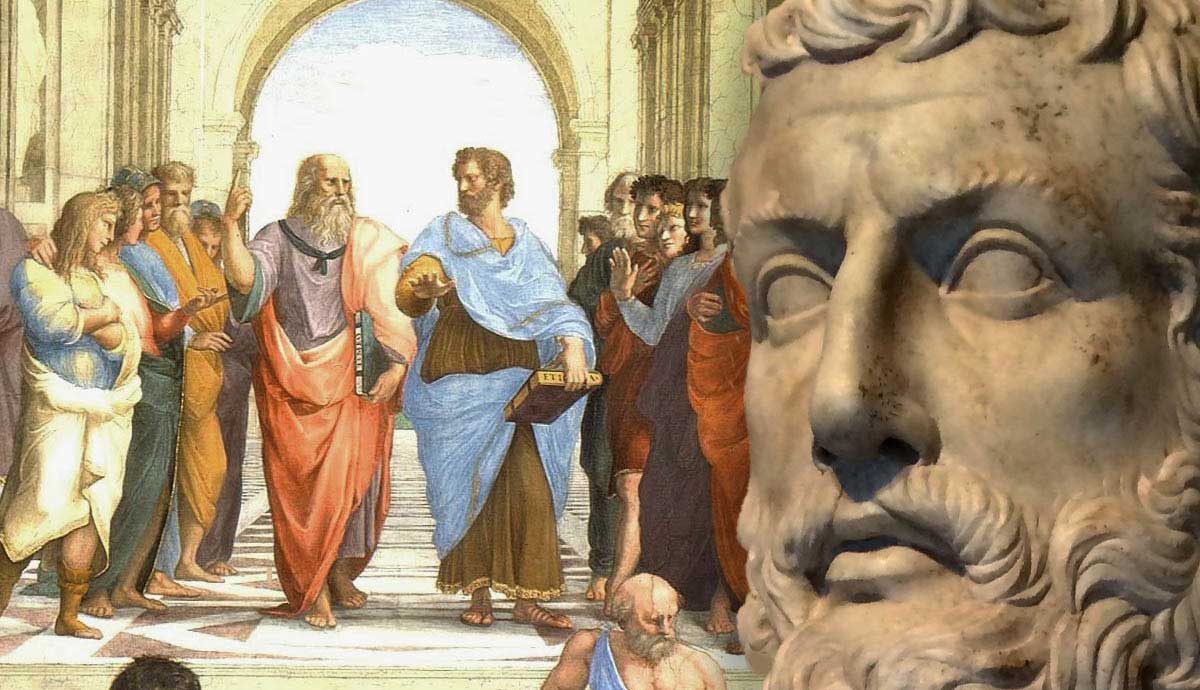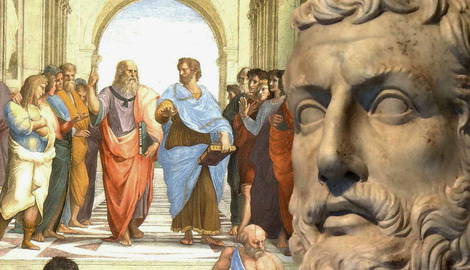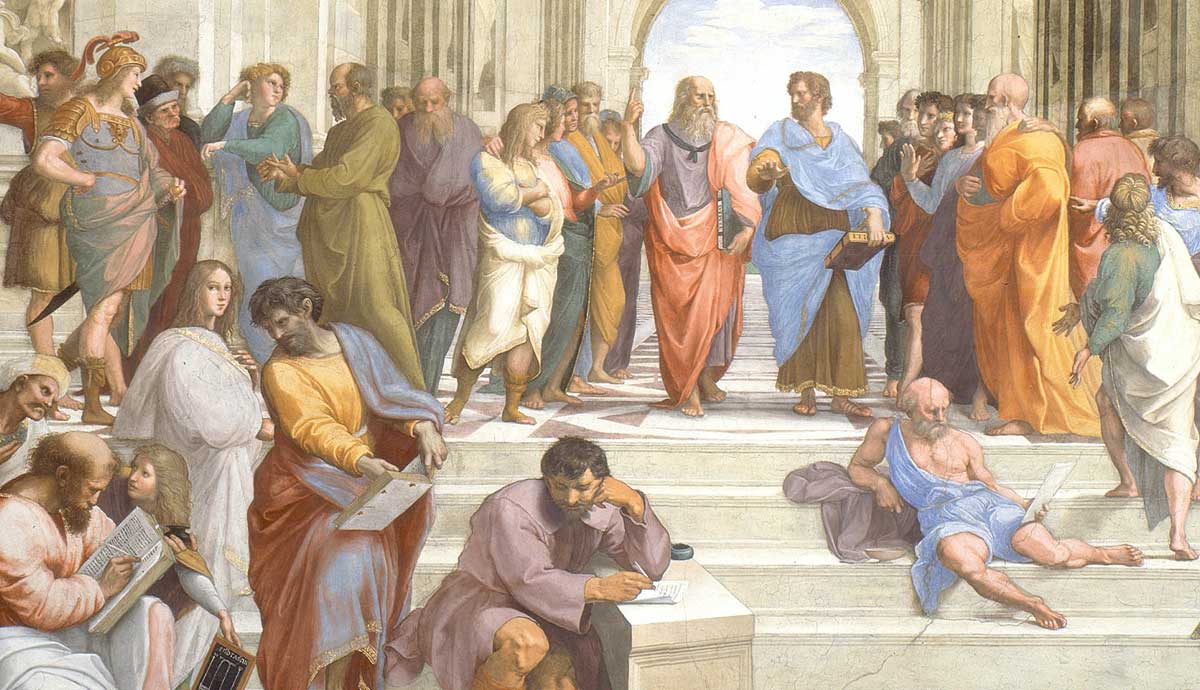
The roots of philosophy, or the Greek Tradition, can be traced back to one of the most profound questions posed by mankind: what is the quintessential characteristic of all things in this world? What is the common trait that we can identify in any object, creature, element or force? That has been a persistent question throughout our history, all the way back from the naturalistic explanations proposed by Thales of Miletus, and is still the driving force of scientific inquiry today. As you may have imagined by now, many different answers have been proposed throughout history, and two of these answers were very prominent during the pre-Socratic period in Ancient Greece: The flux of Heraclitus and the stasis of Parmenides.
In this article, we will analyze the confrontation of these two great minds and their theories, and how the conclusion of such confrontation was immeasurably important to philosophy as a whole.
Heraclitus and Parmenides: Pre-Socratic Philosophers

In order to fully understand the discussion between Heraclitus and Parmenides, it is important for us to understand the pre-Socratic period as a whole.
The pre-Socratic period, or early Greek philosophy, encompasses all the philosophers between Thales of Miletus (c. 624/623 – c. 548/545 BC) and Socrates (c. 470 – 399 BC). It was a period marked by an intense interest in cosmology, that being the study of the origin and substance of the universe.
Many philosophers from that time made their own cosmological systems and theories, and their work was foundational for Western philosophy, paving the way for the development of what we now call the scientific method, therefore leading to the creation of science as we know it today.
Some of the most influential minds of the pre-Socratic period were the aforementioned Thales and his fellow Milesians Anaximander and Anaximenes; the Ionians Heraclitus, Xenophanes and Pythagoras; the Eleatic school of Parmenides, Melissus and Zeno, among many others.
Heraclitus and the Doctrine of Flux

“It is not possible to step into the same river twice”.
Heraclitus, born in the year of c.535 BC, was a native of a city called Ephesus, which was located inside the territory of the Persian Empire, and not much is known about his life. Some of the stories and registered recollections about him are now proven to be fabricated; however, it is believed that he was a man who gave up on his privileged life in order to become a misanthrope hermit and self-taught philosopher. He was a scholar in the matters of materialism, cosmology, empiricism, rationalism, metaphysics, mysticism and logic.
He wrote only one work, a scroll of papyrus that has been lost, although many fragments of said work have been quoted by a plethora of other authors, proving his undeniable influence not only on contemporary thinkers (notably Plato and Aristotle), but also to the philosophic tradition as a whole, being extensively mentioned by authors such as Nietzsche and Montaigne.
Panta rhei or panta chorei are the Greek phrases that summarize what we will be referring to as “the philosophy of flux” proposed by Heraclitus. Otherwise called the theory of impermanence and illustrated by the element of fire, the philosophy of flux is a system that seeks to explain how the nature of all things is precisely change. In other words, the common trait which we can universally identify in all things is the fact that they are subject to constant transformation, as exemplified by the process of aging in living beings, or the ever flowing nature of a river.
Parmenides and the Philosophy of Stasis

“Whatever is is, and what is not cannot be”.
Parmenides was a pre-Socratic philosopher from the city of Elea in Magna Graecia. It is believed that he lived during the late sixth or early fifth century BC, and he is considered the father of metaphysics, having founded the very prominent Eleatic school of philosophy. He originated from a wealthy family, being a well known and influential person in Elea.
Such as Heraclitus, Parmenides only wrote one known work, often referred as On Nature, and only some fragments of this work have survived the test of time as well. The writings of Parmenides are credited for containing the first sustained argument of philosophy and one of the first digressions into the concept of being. The influence of Parmenides is undeniable, his views are still relevant to this day, and the rivalry between him and Heraclitus, which we will be analyzing soon, is still brought up in many philosophical discussions and studies.
The philosophy of Parmenides is based around the concept of stasis, which means that the universe is in constant balance, that things either exist or do not exist, and they cannot change. Everything exists as part of an unchanging nature, and what we may observe as transformations are merely illusory appearances. The nature of the universe is, therefore, permanence.
The Confrontation and Plato’s Conclusion

The direct confrontation between the two opposite lines of thought we have just established happened in a dialogue recorded by Plato called Sophist.
This dialogue’s objective is to define through dialectic the difference between sophists and philosophers, being and not being, and to determine the nature of all things through the juxtaposition of the ideas of Heraclitus and Parmenides. Sophists were pre-Socratic teachers who were criticized by philosophers because they earned money for their teachings, while philosophers believed that knowledge should be spread for free. The contrast between sophists and philosophers serves as a metaphor for the illusory appearance of objects in our world and their true immutable forms.
After presenting both the philosophy of flux and the philosophy of stasis, Plato then claims that they are, in fact, not mutually exclusive at all. If according to Parmenides everything has an innate and immutable essence, and according to Heraclitus all things are subject to constant change, we may conclude that the immutable essence of all things is change itself.
This conclusion became the origin of Plato’s philosophy of Forms or the Theory of Ideas, which explores the concept that the world exists in two separate spheres: The Physical Realm and the Realm of Forms. The Physical Realm is how we perceive things, constantly changeable, imperfect. This is absolutely reminiscent of Heraclitus’s philosophy of flux, which has impermanence as its primary feature and core essence. On the other hand, the Realm of Forms is perfect, its nature is immutable and unchangeable. It’s clear that the Realm of Forms was heavily inspired by the philosophy of Parmenides, his concept of stasis and the thought that things cannot change.
Whenever we see a river, taking the example from Heraclitus, it is never the same river, because the water keeps ever flowing, changing, moving. However, our perception of that river is guided by the unchangeable concept of a river. Our changeable perceptions are guided by the unchangeable forms of what we perceive. The nature of the universe is both immutable and ever changing.
The Lasting Legacy of Heraclitus and Parmenides

Nowadays, modern science keeps pursuing the same goals that ancient philosophy chased so fiercely, and these incredible thinkers built the very pillars that sustain our civilization and its progress to this day. We still try to explain the universe in its most essential form, we build theories about its origin and we hope that science moves ever closer to explaining the true essence of the universe.
If we analyze everything we went over in this article, it becomes obvious how important the clash between these two philosophical systems was. Not only is Plato’s dialogue, which was based on the contrast between Heraclitus and Parmenides, a prime example of the process of dialectics and synthesis later elaborated by German philosopher Georg Wilhelm Hegel; but it also paved the way for Plato to build his own philosophical system, which is one of the most important foundational works in the Western history of thought.
The juxtaposition between the views of Heraclitus and Parmenides and its later conclusion marks a transition in the ancient Greek tradition, from the pre-Socratic period to the Platonic era, and offers a bridge between cosmology and metaphysics. It provides us with two incredibly insightful explanations about the nature of the universe and an even smarter synthesis of these two apparently opposite systems. Therefore, we can conclude that the importance of the dialogue presented in the Sophist is timeless, making it an essential read to any philosopher or philosophy enthusiast.
The Sophist is not only an immensely influential philosophical work, but also an amazing piece of writing that should be experienced in its entirety by anyone interested in this area.










